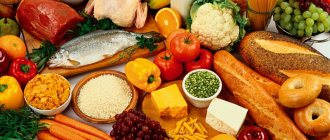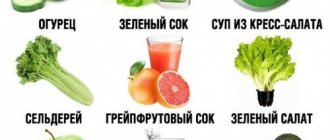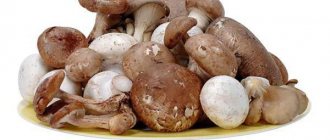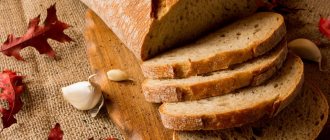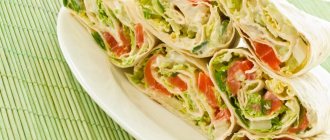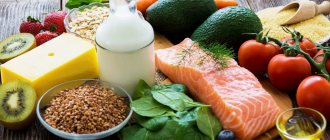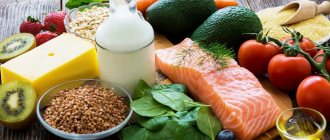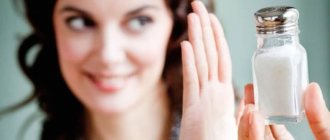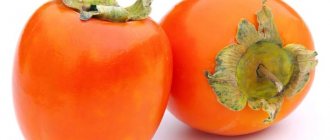Home — For the public
- Map of medical organizations
- Vaccination
- Clinical examination
- Fluorography
- Addresses and opening hours of clinics
- Emergency rooms
- Oncology
- Where to take an HIV test
- Healthy child's office
- Services
- Prevention of CVD
- Disease Prevention
- World Patient Safety Day
- Newspaper "Medical News"
- specialist
- School of Health
— Disease prevention
- HIV infection
- All about vaccination
- All about proper nutrition
- Hepatitis
- Flu
- Dementia
- Schoolchildren's health
- STD
- Tick-borne encephalitis
- Whooping cough
- Measles
- Legionellosis
- Meningococcal infection
- Oncology
- Acute intestinal infection
- Pediculosis
- First aid
- Pneumococcal infection
- Pneumonia
- Prevention of rabies
- Dependency Prevention
- Rotavirus infection
- Diabetes
- Cardiovascular diseases
- Injuries
- Tuberculosis
- Tularemia
- Physical activity
- Obstructive pulmonary disease
- Exotic infections
- Ecology
- Why is swimming in ponds dangerous?
— All about proper nutrition — Is it necessary to eat salt?
The second half of the 20th century formed a negative attitude towards table salt - scientists have identified a connection between its excess consumption and the development of heart disease. Teachings began to arise about the need to avoid sodium chloride in food, and so-called salt-free diets were created.
However, the unique properties allow this white mineral to be used for gastronomic and medicinal purposes. Sodium chloride enters the body only through drinking or eating. And complete refusal of it within 10 days can lead to death. You need to figure out why the body needs salt, how it affects important physiological processes, and whether it can be replaced with anything to maintain health.
What is salt for?
Table salt (or sodium chloride, NaCl) is a white mineral. Its crystals dissolve well in water at almost any temperature and are present in the liquid in the form of positively charged sodium ions and negatively charged chlorine ions. The biological significance of these elements is high.
The mass of sodium in the human body is about 100-150 g. It is a macroelement, which is found in larger quantities in the extracellular space. It performs the following functions:
- maintains osmotic pressure and acid-base balance of the environment;
- helps in the transport of substances across cell membranes;
- together with potassium, it distributes impulses in nerve and muscle tissue;
- activates digestive enzymes;
- participates in the secretion of gastric juice;
- stimulates the excretion of metabolic products by the kidneys;
- takes part in reactions with protein compounds.
In the body of an adult, chloride ions are contained in an amount of 50 g. They are also involved in maintaining the parameters of the internal environment: fluid volume, acid-base balance inside cells and in the extracellular space, and are responsible for ion transport. Chloride ions serve as a source of hydrochloric acid, which plays an important role in digestion processes:
- preparing protein for digestion (denaturation);
- creating the required pH value for the pepsin enzyme to work;
- release of vitamins (B6, B7, B12) and iron for absorption into the blood;
- stimulation of secretion of the duodenum and pancreas.
In addition, hydrochloric acid has a bactericidal effect, protecting the body from microorganisms that enter the stomach with food.
0.86% aqueous NaCl solution is the so-called physiological solution. It has the same osmotic pressure as blood plasma. This allows the use of sodium chloride as a solvent for intravenous administration of drugs.
Chlorine and sodium are found in almost all foods, but salt is the main source of these elements. The mineral is almost 97% represented by NaCl molecules, about 3% is calcium, magnesium, and iron.
Salt-free diet for pregnant women
It is known that salt can retain water in the body, which invariably leads to edema. This can be noticed especially often during pregnancy. Of course, expectant mothers should never go on a diet, but following some rules of a salt-free diet can even be useful in some cases. It is best to start following this diet in the third trimester, when susceptibility to edema is highest.
Sample menu for a salt-free diet during pregnancy
Breakfast:
- semolina porridge;
- milk tea or coffee with milk.
Dinner:
- borscht or soup;
- stewed or steamed meat;
- pasta or stewed vegetables;
- baked potato;
- fruits.
Afternoon snack:
- bun with fermented baked milk or milk;
Dinner:
- steamed fish or meat cutlets;
- boiled potatoes;
- milk;
- Apple pie.
Water is a “slave” of sodium
Salt and water, when consumed orally, are absorbed in the digestive tract and enter the bloodstream. The release of ions and water occurs with sweat and saliva. The main volume is excreted by the kidneys. Up to 180 liters of primary urine passes through them daily. This fluid is formed directly from blood plasma due to filtration in special structures - nephrons. Then 99% of it is reabsorbed (or reabsorbed). And on average, the body excretes only about 1.5 liters of urine per day.
The regulation of water-salt balance is carried out by the hormone vasopressin (or ADH). It is produced in the hypothalamus and acts directly on the kidney tubules, ensuring the reabsorption of water. The movement of molecules occurs along an osmotic pressure gradient: in primary urine it is low, in tissues and blood it is higher.
Water returns to the bloodstream for sodium: each metal ion “takes away” 4 molecules of liquid. This process takes a few minutes. Then the water absorbed back reduces the osmotic pressure of the blood, and the production of vasopressin stops.
This mechanism illustrates how salt and edema are related, and also explains thirst as a response to increased osmotic pressure of the blood. Normally, the peak release of ADH occurs at night. This feature confirms the call of nutritionists to limit the consumption of salty foods at night and in the afternoon.
Brain lesions lead to disturbances in water-salt metabolism. Thus, with hypofunction of ADH, diabetes insipidus occurs. When the disease occurs, the reabsorption of fluid and salts in the kidneys is impaired. A person excretes up to 15 liters of urine per day, but suffers from dehydration.
Excessive secretion of vasopressin (or Parhon's syndrome) manifests itself in the form of decreased urine output with increasing edema. The sodium content in the blood decreases, and the water content increases. Water intoxication occurs.
The release of large amounts of urine or an increase in swelling during normal drinking is grounds for immediate consultation with a doctor. Considering the significant impact of sodium on vital processes, nutritionists advise limiting the consumption of this particular substance. Most products indicate its value in terms of 100 g.
Salt-free diet for 4 days
During such fasting you can lose about five kilograms of excess weight. Products recommended for consumption should be eaten in small quantities at several meals.
On the first day you need to eat only boiled potatoes and drink unsweetened drinks. The use of various seasonings, salt and sugar is prohibited.
On the second day, you should give preference to pasta, still without salt, seasonings and oil. You should also drink sugar-free drinks.
On the third day, it is recommended to eat lean boiled chicken without skin and sugar-free drinks.
The menu on the fourth day is exactly the same as on the first.
Sources of salt
For normal functioning, the body must regularly receive sodium chloride. Since 2021, there have been recommendations in Russia according to which a healthy adult should consume up to 10 g of NaCl (or 4 g of sodium) per day.
A smaller amount - 3-5 g - was recommended for people with chronic heart disease. In 2021, the daily salt norm has been revised. WHO experts announced a figure that is half the usual value: 5 g per day (sodium content - 2 g). Representatives of the Ministry of Health of the Russian Federation announced their intention to adjust the previously adopted norm, but clarified that the new value is advisory in nature.
To illustrate how much salt a modern person consumes, nutritionists calculate its content in common dishes. So 5 g of sodium chloride is in 100 g of regular boiled sausage or Jill cheese. This means that with one of these products a person already receives the daily requirement of the mineral and must abstain from it during the day.
But is it so easy to refrain from “over-salting”? There are many products containing NaCl. The table below shows the most common examples.
| Name | Sodium content per 100 g of product |
| cheese, sauerkraut | 0.8 g |
| green beans | 0.43 g |
| wheat flour bread | 0.4 g |
| beet | 0.26 g |
| milk, celery | 0.125 g |
| eggs, fish, raisins | 0.1 g |
| pork, veal | 0.08 g |
| bananas | 0.05 g |
Salt-free diet for 15 days
This diet is designed for five stages, each of which lasts three days.
The first stage involves eating chicken breast, or chicken meat without fat and skin, for three days. The recommended amount is 500 grams per day.
At the second stage, you are allowed to eat lean fish in the amount of 500 grams per day for all three days.
At the third stage - various porridges cooked in water. Not sweet and not salty. Quantity: 500 grams per day.
The fourth stage involves introducing vegetables into the diet. You are allowed to eat different vegetables, excluding only potatoes from the diet. You can eat fresh, boiled or baked foods in quantities of up to two kilograms per day.
The last fifth stage allows the consumption of fruits, with the exception of bananas, in an amount of about two kilograms per day.
Are sea, iodized and other types of salt healthy?
Followers of a healthy lifestyle advise giving up regular table salt or replacing it with healthier options.
The most common type of product is sea salt. Its composition is distinguished by a high content of various micro- and macroelements: potassium, magnesium, calcium, zinc, fluorine. Followers of a healthy lifestyle claim that this sea salt improves skin condition, helps improve the functioning of the thyroid gland and increases vitality. However, no pronounced positive effect was found when taken orally in normal quantities.
Iodized salt contains up to 40 mg/kg of iodine in the form of potassium and sodium compounds. It is recommended for the prevention of iodine deficiency conditions in endemic regions. The product has a limited shelf life and only works when added to cold or warm dishes. During heat treatment, iodine evaporates. No negative effects on the body when consumed within the daily norm have been registered.
Among the new and popular products, multi-colored salts are also appearing on the shelves. Halite (or pink Himalayan salt) in its composition consists of 95-98% sodium chloride and 2-3% of the so-called polyhalite - aqueous compounds of potassium, magnesium and calcium sulfate, as well as small amounts of iodine and fluorine. Cosmetologists, culinary specialists and followers of a healthy lifestyle vied with each other to talk about the wonderful properties of the mineral. However, there have been no reliable studies answering the question of whether pink Himalayan salt is beneficial, and its benefits have not yet been proven.
Salt-free diet recipes
In order to make it easier to endure the period of salt-free fasting, various recipes are proposed below. Cooking such tasty and healthy dishes will distract you and allow you to enjoy food without salt without causing discomfort.
Vegetable okroshka
To prepare this easy soup you will need:
- radishes – 10 pieces;
- cucumber – 2 pieces;
- potatoes - 2 pieces;
- celery stalk – 2 pieces;
- garlic – 2 cloves.
Finely chop the vegetables and place on plates. Pour the contents of the plates with kefir or whey.
Chicken pancakes
To prepare chicken and vegetable pancakes you will need:
- chicken fillet – 1 piece;
- onions – 2 pieces;
- potatoes - 2 pieces;
- carrots – 2 pieces;
- greenery;
- soda;
- lemon juice.
Best materials of the month
- Coronaviruses: SARS-CoV-2 (COVID-19)
- Antibiotics for the prevention and treatment of COVID-19: how effective are they?
- The most common "office" diseases
- Does vodka kill coronavirus?
- How to stay alive on our roads?
Finely chop the fillet, grate the onion, add to the meat and leave for half an hour. Then add grated vegetables, soda, herbs and a little lemon juice to the minced meat. Mix everything thoroughly and cook like regular pancakes. They will be especially useful in a double boiler. You can serve this dish with unsweetened yogurt or sour cream.
Life without salt
Clinical studies have revealed a connection between the abuse of salty foods and the risk of hypertension, heart attacks, and strokes. Experts associated the mechanism of disease development with an increase in the volume of circulating blood, an increasing load on the heart and thickening of the vascular walls.
This was the basis for limiting the salt intake to 3-5 g/day. among patients with chronic lesions of the cardiovascular system. However, cardiologists note that avoiding adding salt to food delays the disease only when it becomes a new habit. Short-term restrictions do not lead to such a result. A side effect is a decrease in body weight by eating less food and avoiding processed foods - because this is the only way to be sure how much salt will end up on the plate.
The desire to remove “excess” fluid from the body by giving up a number of foods is a popular topic in online challenges. Salt is one of the most frequent “guests” in these disputes. The most common duration of such marathons is 3 weeks. The organizers explain this period by the fact that this is exactly the time it takes to form a new habit.
The essence of a salt-free diet is to completely avoid eating sodium chloride. This diet has no scientific basis, but is acceptable in some cases if you are prone to swelling. The duration of salt abstinence should not exceed 5-7 days. In this case, a person will still receive it from food, but an unbalanced diet and the exclusion of a number of dishes can lead to a deficiency of sodium chloride.
Signs of this condition include:
- lethargy, drowsiness;
- impaired coordination of movements;
- muscle weakness, cramps;
- diarrhea, abdominal pain;
- decreased appetite;
- hair loss;
- various dermatitis.
The described symptoms develop gradually. At first, the body can compensate for the lack of NaCl by extracting it from bone tissue. This increases the risk of osteoporosis. In other words, the effectiveness of a salt-free diet is questionable.
Avoidance of sodium chloride is not recommended for persons with pancreatic lesions, pregnant or lactating women. Limiting salt in hot weather, when a person loses more fluid and salts through sweat, leads to disruption of electrolyte metabolism and deterioration of well-being.
Japanese salt-free diet
The Japanese diet is a type of salt-free diet. This is not a quick, but very effective means for losing weight. It is balanced, and during the fasting process you can lose up to four kilograms of weight weekly, and for the entire course of the diet, about eight kilograms. This option requires a complete absence of salt in dishes. You can use a thirteen-day weight loss method, or you can limit yourself to a diet program for a week. You can use dishes for the first 7 days in your diet.
Japanese salt-free diet menu for 13 days
First day:
- breakfast – natural freshly brewed unsweetened coffee;
- lunch – boiled cabbage, flavored with vegetable oil, two boiled eggs, 250 grams of tomato juice;
- dinner - about two hundred grams of fish cooked in a double boiler or baked in the oven.
Second day:
- breakfast – natural freshly brewed unsweetened coffee, a slice of black rye bread;
- lunch - about two hundred grams of fish cooked in a steamer or baked in the oven, boiled cabbage, flavored with vegetable oil;
- dinner – 250 grams of fermented milk product, one hundred grams of boiled unsalted beef.
The third day:
- breakfast – natural freshly brewed unsweetened coffee, a slice of black rye bread;
- lunch – eggplants or zucchini fried with vegetable oil;
- dinner - about two hundred grams of unsalted beef cooked in a double boiler, two hard-boiled eggs, fresh cabbage flavored with vegetable oil.
Fourth day:
- breakfast – fresh small carrots and freshly squeezed lemon juice;
- lunch - about two hundred grams of fish cooked in a steamer or baked in the oven, 250 grams of tomato juice;
- dinner - about two hundred grams of various fruits.
Fifth day:
- breakfast – fresh small carrots and freshly squeezed lemon juice;
- lunch - about two hundred grams of fish cooked in a steamer or baked in the oven, 250 grams of tomato juice;
- dinner - about two hundred grams of various fruits.
Sixth day:
- breakfast – natural freshly brewed unsweetened coffee;
- lunch - about two hundred grams of unsalted boiled chicken, fresh cabbage with carrots, flavored with vegetable oil;
- dinner - two boiled eggs, one fresh carrot, flavored with vegetable oil.
Seventh day:
- breakfast – freshly brewed green tea;
- lunch – about two hundred grams of unsalted boiled beef;
- dinner - you should choose any of the above complexes, except for the diet from the third day.
Eighth day:
- breakfast – natural freshly brewed unsweetened coffee;
- lunch – half a kilogram of unsalted boiled chicken, fresh cabbage and carrots flavored with vegetable oil;
- dinner - one grated carrot, flavored with vegetable oil, two boiled eggs.
Ninth day:
- breakfast – fresh small carrots, freshly prepared lemon juice;
- lunch – about two hundred grams of fish cooked in a steamer or baked in the oven, 250 grams of tomato juice;
- dinner - about two hundred grams of various fruits.
Tenth day:
- breakfast – natural freshly brewed unsweetened coffee;
- lunch – fifty grams of hard cheese, one boiled egg, three medium carrots, flavored with vegetable oil;
- dinner - about two hundred grams of various fruits.
Eleventh day:
- breakfast – natural freshly brewed unsweetened coffee and a slice of black rye bread;
- lunch - eggplants or zucchini, fried with vegetable oil;
- dinner - fresh cabbage, seasoned with vegetable oil, two boiled eggs, about two hundred grams of unsalted boiled beef.
Twelfth day:
- breakfast – natural freshly brewed unsweetened coffee and a slice of black rye bread;
- lunch - baked or steamed fish, fresh cabbage flavored with vegetable oil;
- dinner – 250 grams of fermented milk product, one hundred grams of boiled unsalted beef.
Thirteenth day:
- breakfast – natural freshly brewed unsweetened coffee;
- lunch – boiled cabbage, flavored with vegetable oil, two boiled eggs, 250 grams of tomato juice;
- dinner - about two hundred grams of steamed or baked fish.
